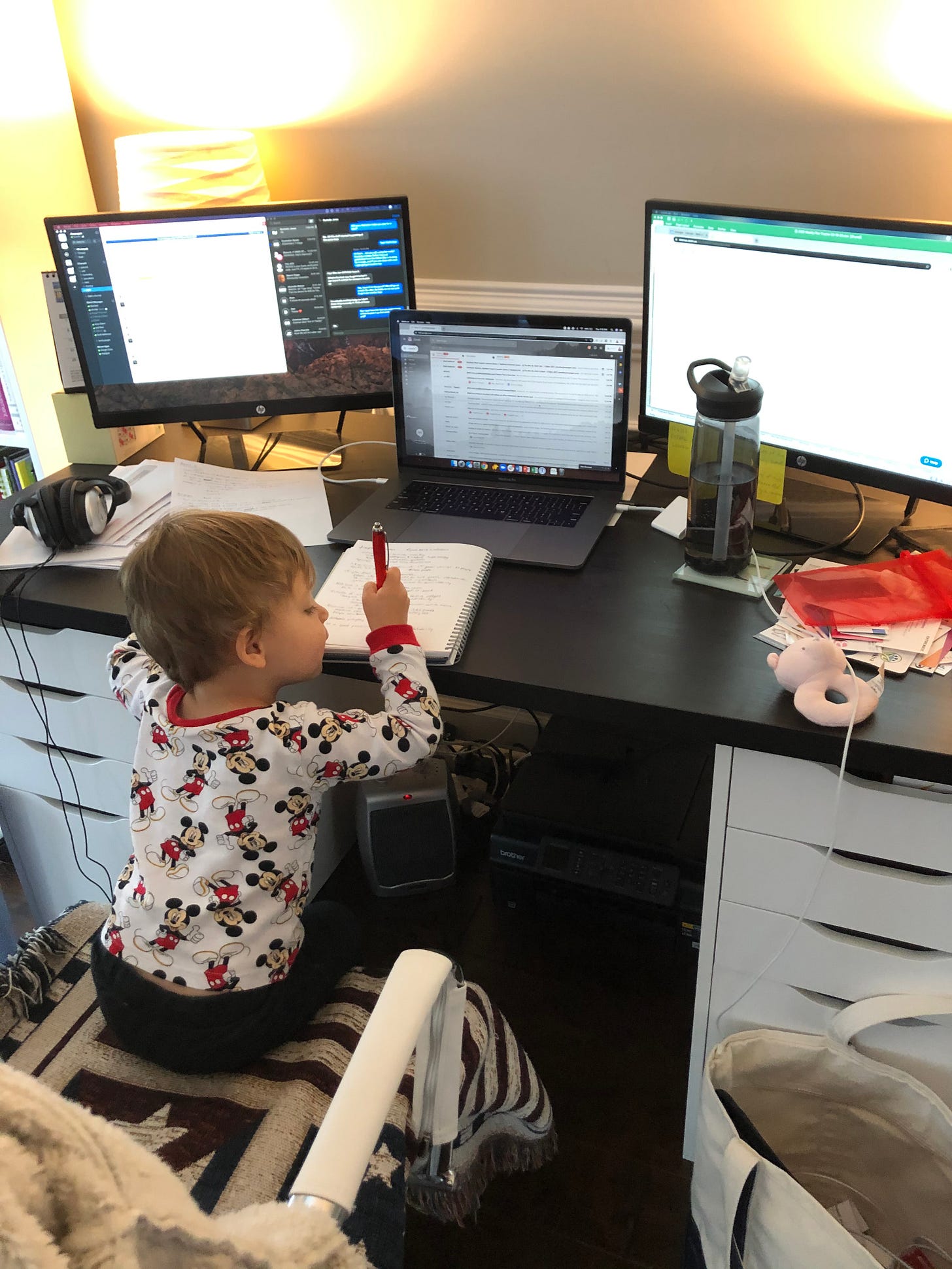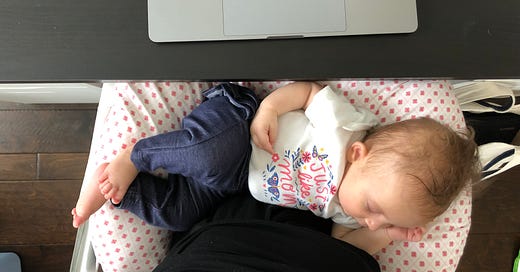The Crisis of Childcare when schools are closed
Stressed parents must cover childcare for 58 more weekdays than the typical allotment of PTO and holidays
Today I sit here writing this before the pitter-patter of little feet comes running down my hall, bursting into my room, and demanding that I answer “Is today a school day?” Today’s answer is fortunate for them and unfortunate for me and my husband.
“No, baby. It’s not a school day.” She squeals. I respond quickly “But it is a workday for mommy and daddy.” “awwwwwwwwwwwwhh,” she replies.
Today is one of those days that leaves working parents in a bind. We are struggling to find care for their kids because school is closed and work is wide open.
In 1870, the Federal Government established the idea of Federal Holidays, of which only 4 were recognized: New Year’s Day, Independence Day, Thanksgiving, and Christmas.
The US now recognizes 11 Federal Holidays with additions such as Martin Luther King’s Birthday, Memorial Day, Juneteenth, and Veterans’ Day. The Federal Government gives these days off to their workers, but private businesses are not required to give off the same Federal Holidays to their workers per the Fair Labor Standards Act.
Private Business typically give an average of 8 paid holidays off. Only 11% of private employers offer Veterans Day as a paid holiday for their employees. Five states have passed laws that require private employers to give veterans the day off on Veterans’ Day
The average length of a school year is 180 days across the USA. Let’s do some quick math. There are 260 weekdays in a standard year (52 weeks x 5 days each). 8 of those weekdays are typically paid holidays for workers of private companies. Let’s look at the straight math, workers are expected to work or take paid/unpaid time off for 252 days per year (260 weekdays - 8 holidays). If schools are only in session for 180 days, parents must find childcare or use paid/unpaid time off for 72 days.
Typical employer benefit packages offer time off based on tenure, if they offer it at all. The chart below shows the US Bureau of Labor Statistics percentages of workers who have access to paid time off.
But now you must be curious how much time off workers get? Workers at smaller companies (less than 100 employees) get access to less paid time off than workers at larger companies (more than 500 employees).
Here is an excerpt from the Bureau of Labor Statistics data on time off
For private industry workers in establishments with 1 to 99 employees, the average number of annual paid vacation days for workers was
- 10 days after 1 year of employment
- 14 days after 5 years
- 16 days after 10 years
- 17 days after 20 years.
For private industry workers in establishments with 500 or more employees, the average number of annual paid vacation days for workers was
- 14 days after 1 year of employment
- 18 days after 5 years
- 21 days after 10 years
- 24 days after 20 years.In today’s economy, your tenure is not entirely in your control. Many people are being laid off from good jobs where they are good and productive employees. This, combined with the persistent erosion of benefits and poor raise cycles is leading more and more workers to job-hop every few years.
Often when you accept a new job, you have a moment after the offer to negotiate. I always negotiate the vacation benefits. Sometimes that has been successful and other times it hasn’t. Sometimes I have fallen victim to the “we really don’t care or track vacation so take as much as you want” in the offer stage and then when I transitioned bosses or roles at the company that flexibility was quickly forgotten.
And we know that women negotiate less than men. So if women are changing their jobs and not negotiating, they are likely ending up at the basic vacation levels offered, which is typically 10-14 days in the first 5 years. Read this if you need to level up your negotiation skills.
Let’s go back to our math. That leaves parents at jobs for 1-5 years with ~14 days off… but remember above they needed to find childcare for 72 days. They must find childcare for 58 weekdays (72 weekdays - 14 paid weekdays off). 58 weekdays!
And we wonder why many parents (especially moms) opt out of the workforce. We wonder why the US Surgeon General is stating that parents are extraordinarily stressed (this is only one reason).
So today if you are expected to work while your kids are home (like me), know that you aren’t alone. Our society systems are not set up for this to be easy for us. We are expected to find ways to fill a gap of 58 weekdays during the year without tapping into our paid time off or expected holiday schedule. By the way, 58 weekdays is 11.6 weeks. A huge chunk of this is in the summer and holiday seasons.
Perhaps you have secured a spot at a coveted day or week camp, or you have worked with the neighborhood parents to shuffle the kids between houses. Maybe you have traded half days with your spouse so each of you can get some work done, or you have hired a sitter to come to your house for the day. Maybe you have access to the “village” we have heard so much about over the years, leaning on grandparents or other friends and family members to watch your children.

However you have solved this monster gap in coverage or the single day today of Veterans’ Day Coverage, know that you are doing a great job.
Thanks for reading and sharing this post. Working Mom Unplugged offers candid, unfiltered insights on balancing a career with motherhood, sharing real-life stories and practical tips, and fostering a community for working moms. Please consider sharing this post with a fellow working mom.






I’m on the last day of winter school vacation week and already planning for how we’re going to handle this next year. The babysitter cancelled on us this morning 😁. The kid is our top priority but at the cost of our work and overall sanity. Work brain and parent brain are like oil and water - no matter how hard you try, they don’t truly mix. How you handle that is a masterful life skill!
As a self employed therapist who works on billable hours only, this really resonates. My husband and I struggle to balance the load of sick kids or when they have an unexpected day off. We don’t have the luxury of family nearby to help. It’s a tough act that often times makes me so angry at the lack of options we have and the options available are astronomical!